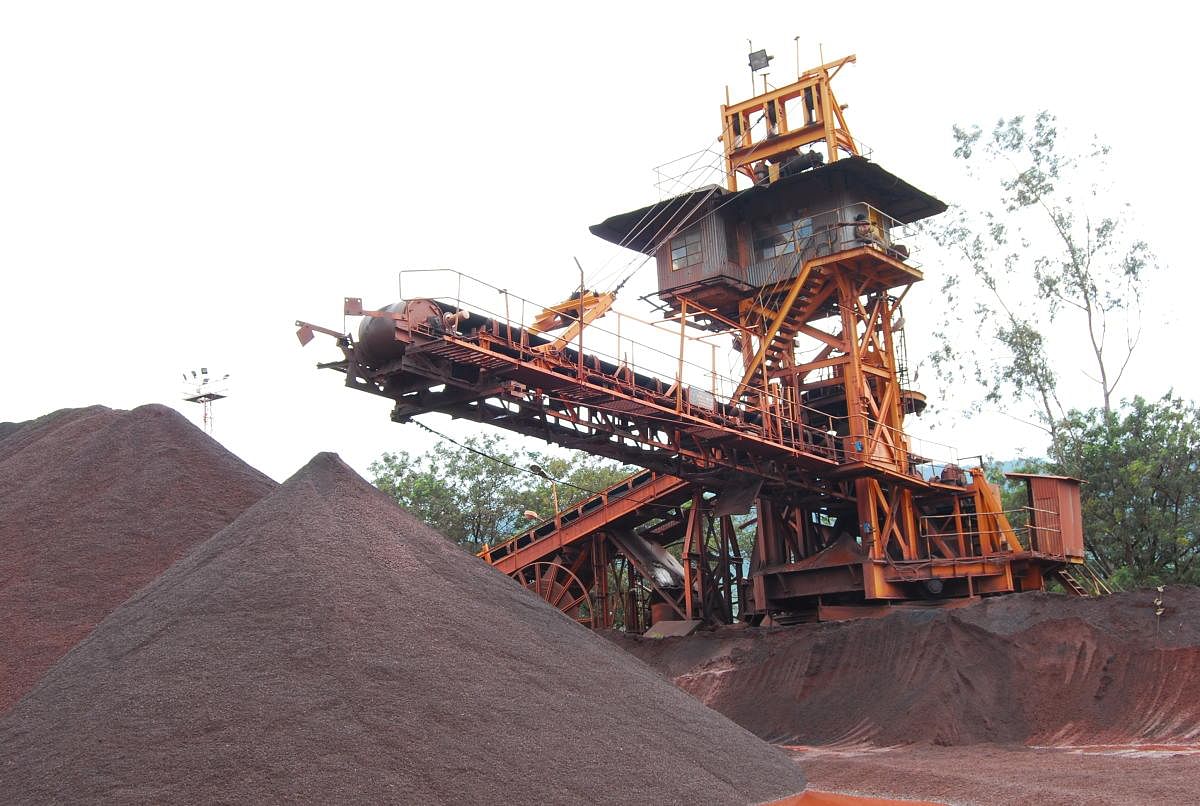
Steel mills in India are likely to face a severe shortage of iron ore, the key raw material, during the next financial year as many iron ore mining leases are set to expire during the next quarter.
By March 2020, as many as 232 iron ore mining leases (out of a total of 329 mining leases) will expire. Of this, 208 are non-operative mines and 24 are operative iron ore leases. A majority of non-operative iron ore mines are in Goa where the state is passing through blanket mining ban. Besides iron ore, the mining leases of 21 mines of manganese, 14 of bauxite, 23 of limestone, 4 of chromite, 2 of graphite, 1 of garnet and 32 of other miners will also expire on March 31, 2020.
While the requirement of iron ore is pegged at 180 million tonnes to produce an estimated 112 million tonnes of steel next year, it is anticipated that the production of iron ore may drop to 135-140 million tonnes in 2020-21 within the country.
Among the non-operating mines, 42 are in Karnataka and among the 48 operative mines, 24 are in Odisha, 6 each in Jharkhand and Karnataka, 5 in Gujarat, 3 in Andhra Pradesh, 2 in Rajasthan, and one mine each in Himachal Pradesh and Madhya Pradesh.
India’s steel production has been increasing year on year. It stood at 106 million tonnes in 2018-19 and is expected to increase to 112 million tonnes in 2019-20. In FY18-19, India exported approximately 17 million tonnes of iron ore and is expected to continue with the rising trend of export of iron ore keeping in view the global rise in the prices. Post-2020, close to 70 million tonnes of iron ore production will be curtailed across Odisha (52 MT), Jharkhand (10 MT), Karnataka (6 MT) and other states.
“India is passing through a phase where economic development needs momentum. the core sectors of economy depend on output from mining sector, to keep up pace and momentum of growth.
With risk of expiry of mining leases, as many as 329 mines in March 2020, the vision to build a $5 trillion economy seems a challenge,” R K Sharma, Secretary General, Federation of Indian Mineral Industries (FIMI) told DH.
Besides the renewal of leases of operating mines, the government should also find out ways to expeditiously renew non-operating mines, he said, adding, “This is where the production would matter most, since the number of non-operating mines are much larger than operating mines.”
The Federation of Indian Mineral Industries has been pressing the government to streamline mining sector growth to give the comfort of future investments in the mining sector.
“Post March-2020, there is a clear signal of iron ore disruption to the tune of 50-60 million tonnes in the country. If PSU miners like NMDC and OMC gear up, then they would be able to fill in the gap by 6-8 million tonnes. However, imports would rise next year, and India will become a net importer in 2020-21,” Monica Bachchan, founder, Metalogic Projects Management Services Pvt Ltd, a Delhi-based metals research firm said.
The Mines and Minerals (Development and Regulations) Amendment Act, 2015 – subsections (2), (3) and (4) says, “where mineral is used for captive purpose, it shall be extended and be deemed to have been extended up to a period ending March 31, 2030”. It also says that “where mineral is used for non-captive purpose, it shall be extended and deemed to have been extended till March 31, 2020.” The captive miners will also have the ‘right of first refusal’.
“FIMI does not understand the logic behind such discrimination. For captive mines, the expiry is March 2030 and for non-captive mines, it’s March 2020. Where have you heard in the world about such differentiation. Whether it is captive or non-captive what difference does it make? Ultimately the raw material is being used to make final products. These bottlenecks are nothing but a hindrance in economic growth and need to be removed,” he added.
Not just supplies of raw material, thousands of jobs are also at stake if leases of mining companies are not renewed immediately and the MMDR Act is not amended further to facilitate mining activity in India.